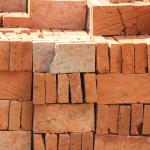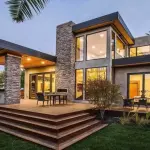Explore Our Exciting New Property Listings Now Available in Prime Locations!

List of Common Building Materials Used in Construction
Construction is a fairly integral feature in the circle of human development. The materials used in construction have a major say in durability, efficiency, and even sustainability. From the time of the ancient civilizations to the modern cities, the building material has evolved, but the basic principles for choosing the right material essentially remain the same. This blog will look at certain commonly applied building materials and their characteristics. Whether he is an architect, a builder, or a homeowner, knowledge of all these materials is paramount for successful construction.
1. Concrete
Concrete is among the most used building materials worldwide. In simple terms, concrete is a product of the mixture of cement, water, and mineral aggregates such as sand or gravel, or even crushed rock. The properties of concrete are strength, durability, and moldability, hence concrete found wide applications in such objects like foundations, walls, pavements, and bridges.
Advantages: It is highly durable, it resists fire, and is resistant to bad environmental conditions.
Cons: Develops cracks after some time, and the production process is also one of the causes of carbon emission.
It is combined with rebar strength steel to form reinforced concrete, giving it an even higher tensile strength and ductility for even greater structures-such as skyscrapers and parking garages.
2. Wood
Wood has conventionally been used for building purposes since antiquity owing to its flexibility, aesthetic qualities, and renewal. In construction, several categories of wood are used, like oak, pine, and cedar, but most especially bamboo for its peculiarities.
Pros: Lightweight, easy to work with, renewable, and provides natural insulation.
Cons: Susceptible to fire, moisture, and pests in case of inappropriate treatment.
Wood is principally used for framing, flooring, and finishing, and it is also one of the quite common materials used in residential construction. Modern innovations in wood technology have created strong and highly environmentally sustainable solutions, such as plywood and CLT.
3. Steel
Steel is a hard, strong, and high-strength material that has found its application in most commercial and industrial building constructions. It is basically composed of iron, plus a minute amount of other metals, such as carbon, for improvement in properties.
Pros: Strength, corrosion resistant, and recyclable.
CONS: It is expensive, a skilled labor force is needed to operate with it, and the cost of energy production is high.
The applications include structural frameworks, roofing, and cladding. Reinforcing steel along with concrete is used to increase load-carrying capacities of the structure; hence, it is a favorite in skyscrapers and heavy-duty industrial projects.
4. Brick
Bricks are a block of clay or other materials baked in a kiln and are among the very oldest building materials known to man. Brickwork gives a classic look and features excellent thermal mass properties, which can store heat and release it at a slower rate.
Pros: Fire-resistant, durable, excellent insulation.
Cons: Heavy, their installation is rather labor-intensive, and expensive for larger projects.
Bricks are chiefly used in walls, paths, and chimneys. The main reasons most of us use bricks for the beautiful look and withstanding bad weather. There are also some modern replacements for bricks, like concrete blocks, widely being accepted due to their reasonably cheap cost and ease of use.
5. Stone
Natural stone has been used as one of the oldest building materials-from ancient monuments, right through to modern homes. Varieties commonly employed in building include granite, limestone, marble, and slate.
Advantages: Highly durable, it resists weathering and displays an aesthetic appeal.
Cons: expensive, heavy, and cumbersome to work with.
It finds very common application in foundations, walls, facades, and flooring. Stone gives one a sense of permanence and solidity of the structure, and modern quarrying techniques have made stone more available than in ancient times. Cultured stone or artificial stone is another material being used as a cheaper alternative to natural stone for interior purposes.
6. Glass
Glass has become one of the most essential materials in contemporary architecture; thus, it serves not only functional purposes but also aesthetic appeal. Commonly applied in windows, skylights, and curtain walls, glass allows natural light to penetrate a building, improving energy efficiency and enhancing indoor environments.
Pros: Transparent, permits natural lighting, and has the capability to be very efficient with coatings or treatments.
Disadvantages: It is fragile, costly and offers only limited insulation without special treatments.
Examples are tempered glass, laminated glass, and double-glazed windows for more durability, safety, and insulation. These glasses reduce heat transfer; therefore, they can be considered an ecologically friendly product when green buildings come into question.
7. Aluminum
It finds extensive use in the building industry for its light mass, resistance to corrosion, and malleability. Application fields include window frames, doors, and roofing systems where the main prerequisites are durability and low maintenance.
Pros: lightweight, resistant to corrosion, and recyclable.
Drawbacks: Not as strong as steel, and more expensive.
Nowadays, with the development of technology, anodized aluminum or powder-coated aluminum cladding and façades find their place in bringing functionality and aesthetics to modern architectural designs quite often.
8. Plastic
Due to versatility, being light-weight, and inexpensive, plastics have become indispensable in construction. PVC or Polyvinyl chloride, acrylic, and polycarbonate are generally used in piping, insulation, windows, and flooring.
Pros: Light in weight, water-resistant, and inexpensive.
Disadvantages: Prone to UV degradation, less durable than traditional materials, and nonbiodegradable.
Construction is a sector where an increasing use of recycled plastics takes place, while the development of this material is under way with a view to reducing its overall environmental impact, but still having practical applications, especially in insulation, roofing, and plumbing.
9. Gypsum
The most common gypsum building materials for interior walls and ceilings in recent times are: normally in the form of gypsum board or drywall, which consists of pressed gypsum powder between two thick sheets of paper.
Pros: fire-resistant, soundproofing, and installation/finishing work is pretty easy.
Disadvantage: It is prone to water and needs periodic maintenance.
Gypsum board is a very inexpensive way of finishing the interior of the building; it provides a very smooth surface that can be painted or wallpapered relatively easily. It also finds wide application in partition walls because it gives freedom in the layout of rooms.
10. Insulation Materials
Material insulation can be called the cornerstone in energy-efficient buildings. A wide range of materials is available to get the work done, ranging from fiberglass and foam board to cellulose and spray foam.
Pros: Improves Energy Efficiency, Noise Pollution Control, Comfortability.
Disadvantages: Some, like fiberglass, can be hazardous if installed incorrectly.
The right type of insulation does depend on the climate, building type, and budget; however, it could save so much in energy consumption and promote comfort inside the building as a whole.
Related posts:
The real estate industry offers a wide array of lucrative careers, catering to a diverse set of skills, interests, and professional goals. Whether you're driven by sales, finance, legal expertise, or management, there are many paths to success. One of...
In the fast-paced world of real estate, the right platform can make all the difference for buyers, sellers, and renters alike. Whether you're looking for a dream home, a vacation villa, or an investment project, real estate websites have revolutionized...




 The Highest Paid Jobs in Real Estate
The Highest Paid Jobs in Real Estate
 The 7 Best Real Estate Websites of 2024
The 7 Best Real Estate Websites of 2024
 List of Common Building Materials Used in Construction
List of Common Building Materials Used in Construction
 How to Design a House Interior: A Step-by-Step Guide
How to Design a House Interior: A Step-by-Step Guide
 Explore Different Styles of Architecture: A Journey Through Time and Design
Explore Different Styles of Architecture: A Journey Through Time and Design